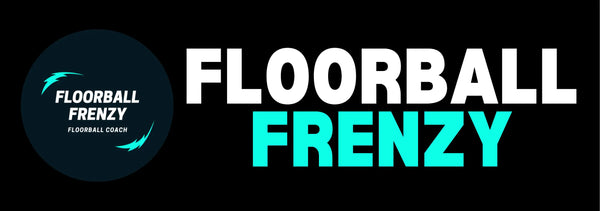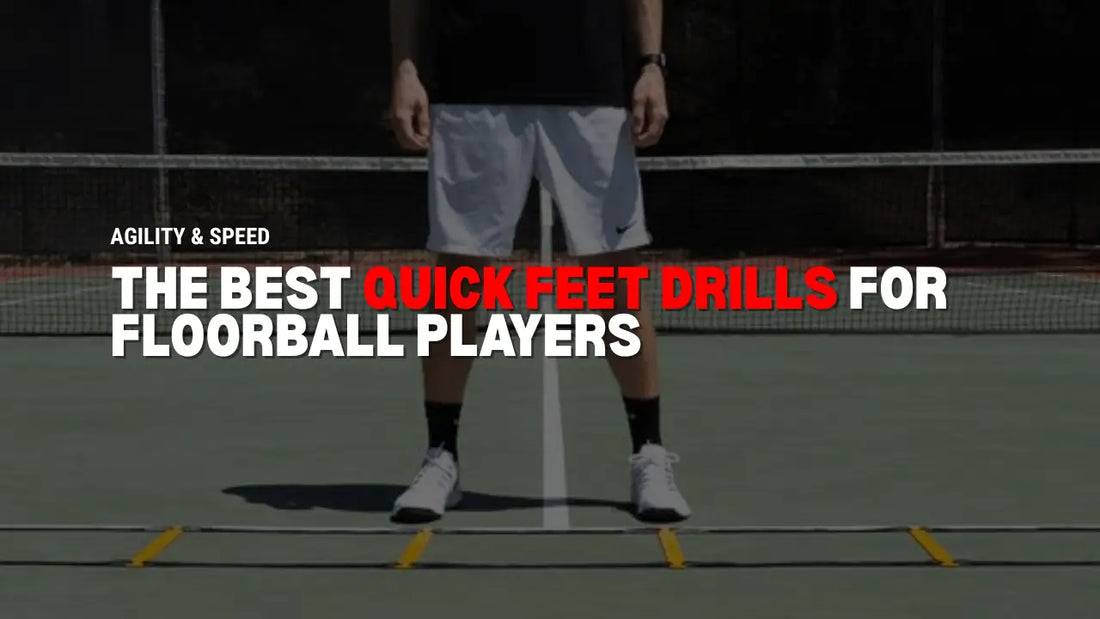How Floorball Players Can Improve Foot Speed
So you want to get quicker, faster, and more agile?
All floorball players do — and the modern game demands it.
Each season the game gets faster, and every level you climb, speed becomes the deciding factor. A “fast” player in Division 2 looks average in Division 1. A quick junior might suddenly look slow when stepping up to national or pro level.
You can’t expect your current level of speed to carry you into the next stage of your career.
If you want to play higher-level floorball, you need to get faster. Speed training should be a core focus both on and off the court.
This is why players are always asking us: “How can I get quicker feet?”
In this article, we’ll break down why “quicker feet” is just one piece of the puzzle, what else you need to develop elite speed in floorball, and of course — the best drills to actually improve your foot speed.
Quick Feet vs Agility vs Speed
Speed is the X-factor in floorball.
It decides who wins loose balls, who creates separation, and who can recover fastest in defense. But most players lump “quick feet,” agility, and speed all together — usually doing a couple ladder drills and thinking that’s enough.
The truth? They’re related, but different. Let’s clarify:
- Quick Feet Training – These are “athleticism” drills. They refine movement quality, rhythm, and body control. The goal is smoother, more efficient movement.
- Agility Training – Agility is your ability to react. It’s not just moving quickly but reading the game and instantly changing direction. This is reactive: partner drills, reaction lights, or any read-and-respond training.
- Speed Training – The umbrella term: acceleration, deceleration, multi-directional movement, top-end sprinting. For floorball, this means everything from short 5m bursts to lightning-fast change of direction.
All three matter. But each demands different training methods.
Why Quick Feet Still Matter in Floorball
Even if agility and full speed training are bigger game-changers, quick feet drills still hold value. Here’s why:
- Better body control – Quick feet drills improve coordination, rhythm, and fluid movement. This benefits younger players especially, but even pros can go from stiff movers to fluent, flowing athletes.
- Improved mechanics – Too many players run tall and heavy. Quick feet drills reinforce athletic postures: low hips, light steps, strong arms.
- Sharper nervous system firing – Explosive, repetitive footwork helps your body fire faster. Over time, you shorten the gap between decision and movement.
The key? Intentional reps. Don’t just cruise through ladders or cones. Each drill should be short, explosive, and done with purpose.
Three Key Movement Mechanics for Floorball Players
When doing quick feet training, focus on mechanics first. The aim isn’t just moving fast, but moving like an athlete.
1. Low Hip Athletic Position
The lower you can stay in your stance, the more power you can generate. Floorball is played low — in defense, in sprints, in pivots. Practice drills while sitting into your hips, not standing tall.
2. Light on Your Toes
Heavy feet = slow feet. Stay on the balls of your feet with a slight forward lean. If your steps sound loud, you’re too heavy.
3. Active Arm Drive
Your arms drive your speed. Too many players lock their arms tight. Pump them aggressively and stay connected — it makes your whole body faster.
The Best Quick Feet Drills for Floorball Players
Any drill that challenges new motor patterns, reinforces athletic positions, and demands explosive bursts has value. Here are our staples:
Drill 1: Two-Foot Quick Touch
Go all-out for 15–20s. Stay low, pump your arms, and get as many light, quick touches as possible.
Drill 2: Two-Foot Crossover Quick Touch
Step over a line or cone with crossover steps, keeping rhythm and speed. Trains lateral quickness for defensive pivots and offensive cuts.
Drill 3: Explosive Crossovers
Practice rapid side-to-side crossovers. Emphasize staying low and powerful — just like when cutting off an attacker or escaping pressure.
Drill 4: Lateral Quick Figure-8
Weave laterally around two cones in a figure-8. Focus on staying light and low while transitioning directions.
Drill 5: Linear Quick Feet Figure-8
Do the same, but forward-backward. Great for defenders switching from pressuring forward to retreating back.
Drill 6: Lateral Hurdle Quick Steps
Step rapidly side-to-side over a cone or line. Builds lateral explosiveness for crease battles and fast defensive shifts.
Drill 7: Lateral Hurdle Crossovers
Progression of the last one: add crossovers. Forces over-speed footwork while staying low and controlled.
👉 Ladders can also be valuable for coordination and rhythm. We use them often as warm-up or nervous system activation.
How to Use Quick Feet Drills
There are two main ways to build these into your training:
- Standalone Speed Sessions – 20–25 minutes of speed work, ideally at the start of a practice or separate training day.
- Workout Starter – Add 3–5 quick drills after warm-up to prime your body before strength or conditioning work.
Both are effective. The best approach depends on your schedule. At FloorballFrenzy, we encourage players to include speed training 3 times per week whenever possible.
The most important thing: don’t just read about it — do it. Knowledge is nothing without reps. If you’ve made it this far, plan a quick feet session today.
Want to take your speed work even further?
When you grab any product from FloorballFrenzy.com, you’ll also receive:
- BONUS: Mobility & Stretching Guide for Floorball – so your quick feet drills feel smoother and more explosive.
- BONUS #2: Travel Workouts for Floorball Players – short, high-impact routines to keep your footwork sharp anywhere.
- BONUS #3: Game-Day Nutrition Blueprint – fuel your body so your speed actually shows up on the court.
These guides are built to turn quick feet drills into real, game-changing speed.

